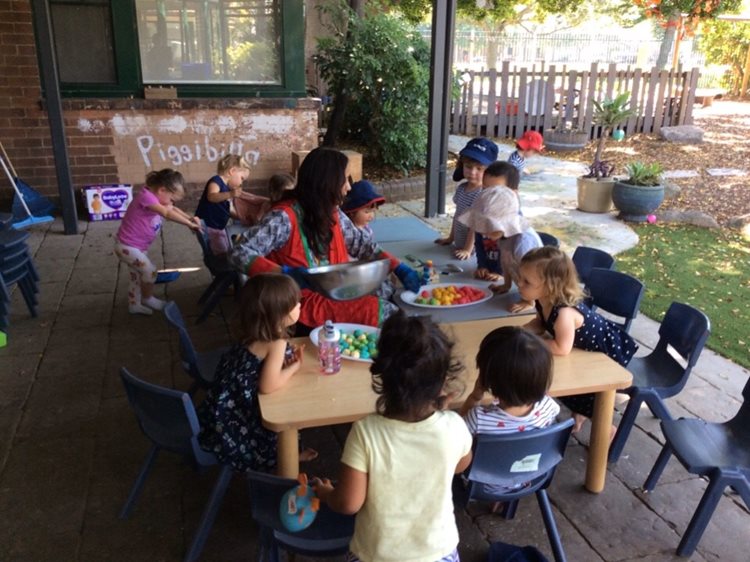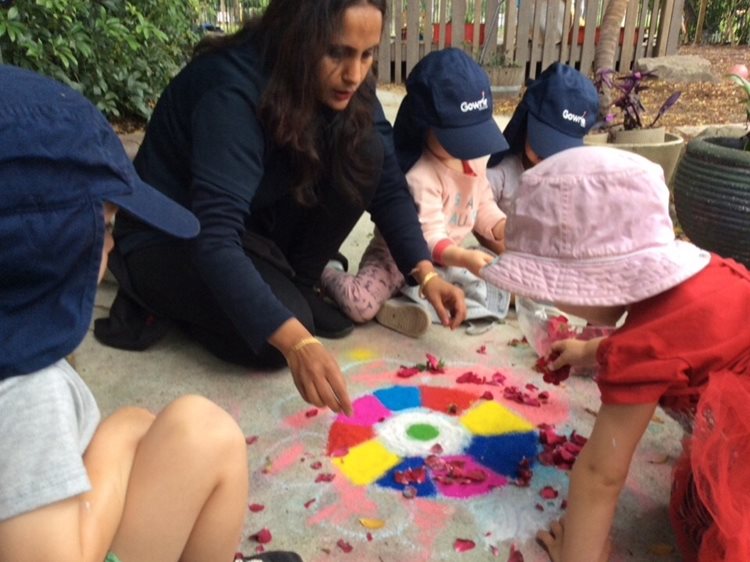Celebrations play a vital role for both children and educators in early education and care settings. When relevant and meaningful, they provide opportunities to learn about and show respect for the cultural diversity that forms the fabric of the service, and they can help to foster a sense of belonging.
‘Educators who are culturally competent respect multiple ways of knowing, seeing and living, celebrate the benefits of diversity and have an ability to understand and honour differences’ (EYLF, 2009, p16).
CELA Early Education Specialist Jennifer Moglia believes that marking important events that are relevant and meaningful to the children and community provides an opportunity to reinforce a child-centred approach.
By valuing a celebration that is important to a child, educators are able to develop their connection and help link the home and educational environments,” says Jennifer. “Additionally, celebrations offer a moment in the busyness of life to purposefully share joy, reflect on memories and be in a moment together.
Celebrations are connected to the EYLF in the following ways:
- When children congratulate each other and demonstrage kindness, they learn to interact in relation to others with care, empathy and respect.
- Gathering with a collective purpose/intention can help children develop a sense of belonging to groups and communities.
- Coming together with others helps children become strong in their social and emotional wellbeing.
Celebrating respectfully
When incorporated in a respectful and meaningful way, celebrations of festivals, cultural and religious occasions can provide an opportunity for educators to explore concepts of diversity, respect, assumptions and inclusion. They provide a chance to build on all children’s self-esteem and pride in their family, community and linguistic heritage, and build bonds between children.
To ensure celebrations are acknowledged in a sensitive way, Jennifer suggests that we can:
- Consider inviting families to share which celebrations are important in their culture and provide advice on customs.
- Avoid cultural tokenism such as superficially celebrating an event without exploring any other aspects of that culture throughout the year.
- Provide children with equal resources and time to effectively celebrate the cultural events that have meaning to them, and create awareness and understanding of why the celebration is important to specific children.
Making a thoughtful choice and including the childrens' voices
It's impossible to celebrate every cultural event in the calendar, so how can we make a thoughtful choice?
Some factors that may assist in this decision include considering the cultures of families and educators at the service. Will the events included be relevant to the community of the service and the wider community? Take into consideration children’s interests and whether learning about a celebration will be valuable to finding out about different cultures. Share a book about celebrations with the children and invite them to take a vote on one that they'd like to find out more about.
Jennifer suggests reflecting on the following questions prior to hosting a celebration:
- What are my understandings of each child’s needs and expectations?
- Are the plans age appropriate for each child?
- Have we considered the impact of additional noise, decorations, visitors and performances?
- Is this celebration in line with COVID regulations and our COVID safe plan?
- Are there theories, philosophies and understandings shaping and assisting my approach, or am I doing things this way because it’s what we have always done?
- Who is advantaged and disadvantaged by our celebration plans?
- What am I challenged by? What am I curious about? What am I confronted by?
- Are there other theories or knowledge that could help me to understand better what I have observed or experienced about this celebration?
It is also important to engage in self-reflection to ascertain if you were able to achieve your aims and aspirations. ACECQA suggests the following considerations when evaulating the celebration:
- Were the celebrations reflective of all families and children?
- Did families feel welcome to participate in celebrations?
- Was the time allocated to celebrations sufficient?
- Were experiences developmentally appropriate?
- Were appropriate alternatives offered for families who chose not to participate in celebrations?
- Did the children demonstrate an increased awareness and respect for diverse values and beliefs?
- Was the program able to incorporate child- initiated celebrations?
- Were the resources needed for the celebrations adequate and appropriate?If you could do it all again what would you do differently?
- What have you learned about celebrations?
(Source: Exploring celebrations in children's services)
Celebrating Diwali By Anuradha Kaushik
Diwali, also known as the festival of lights, is an important religious festival originating in India. Diwali is celebrated every year in Autumn by Hindus, Sikhs and Jains. This is one of the most significant festivals of the year, and is a major one for a variety of reasons, mainly as the lights lit during the festival symbolise the triumph of good over evil. Additionally for some, Diwali also corresponds with harvest and New Year celebrations. This year it will be celebrated on November 4.
The history of the festival
Diwali is celebrated to honour one of the Hindu gods known as Rama-Chandra. It is believed that during this time of year, Rama returned to his people after an absence of fourteen years. Over this period of time, he had fought and won a battle against one of the demon kings, Ravana. One of the reasons for this battle was that Ravana had forcibly taken Rama-Chandra’s wife, Sita. In order to get her back, the God Rama fought with Ravana.
In the present day, during the five-day festival, people light and decorate their houses beautifully to celebrate Rama’s victory over evil (Ravana), as a living expression of light triumphing over darkness. It is also believed that on this day, the Goddess of good fortune, wealth and happiness, known as Lakshmi, roams the Earth and enters any house that is clean, pure and is decorated the best. Hence this is the reason why people start cleaning their houses days before the festival of Diwali and decorate their houses colourfully.
Traditions and customs practiced
During this special time, millions of Indians around the world celebrate the festival of Diwali by exchanging gifts, lighting fireworks and eating festive meals and sweets. People also buy and wear new and colourful clothes, thoroughly clean their houses and decorate them with lights. People spend time with their friends and family eating delicious meals. The last day of the Festival is the main Diwali celebration: people dress up in colourful clothes and pray and eat a special breakfast in the morning. As it starts to get dark, people decorate their houses with candles and diya’s (oil lamps).
A few days before Diwali, colourful Rangolis (patterns made with coloured sand) are created at the entrance of people’s houses as a symbol of welcoming - primarily to the goddess Lakshmi herself. These Rangoli patterns are usually made using coloured chalk, rice powder, and crushed limestone. These are some of the rituals and traditions followed on the festival of Diwali.
How we celebrated Diwali in our service
In recognition of Diwali, I engaged in a few traditional experiences with the children. I wore bright clothing known as salwar kameez, which is a type of suit (a long top and pants). I created a welcoming Rangoli at the entrance of my centre — there was much excitement amongst everyone who saw it, and the children in my room were keen to make one themselves. The children loved making the Rangoli with me and were quite curious about it. I gave them a brief description about the Rangoli and its significance.

I read a few books on Diwali such as “Peppa Pig Diwali” as well as a non-fiction book about the festival. We also made paper lanterns to represent the light that is the major part of the festival. To follow up, I made coconut ladoos, which is a simple sweet dish, made by using only 3 ingredients: desiccated coconut, condensed milk and food colouring. The children really enjoyed making, eating and sharing the ladoos with other rooms, and ended up asking for more. The children also found my salwar kameez very interesting and loved the bright colours. Through these captivating experiences, I was able to convey some of the basic knowledge and traditions about Diwali and the rituals involved to the children as well as the parents and staff. The feedback I received showed me how much the chance to celebrate this festival was appreciated by the families and my colleagues.

About Anuradha Kaushik
Anuradha Kaushik has worked in the Early Childhood Education sector for almost 5 years. Originally from India, she has over a decade’s experience working in primary and secondary school education and speaks English, Hindi and Punjabi. Anuradha believes that play is an integral part of children’s learning process and that children learn by observing, experiencing, listening, touching and feeling what is made available to them in their surroundings. She enjoys playing, learning and imparting value-based education to children.